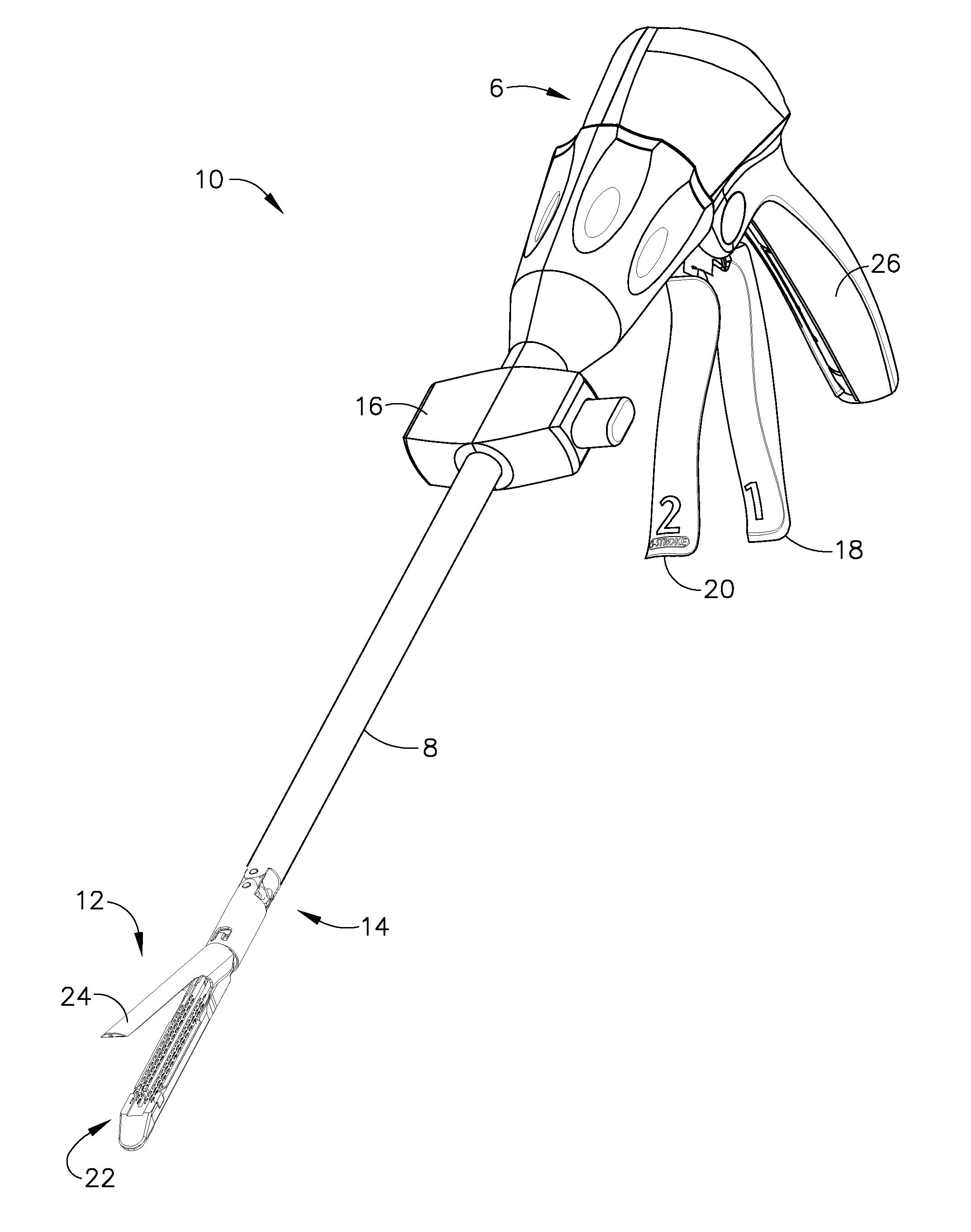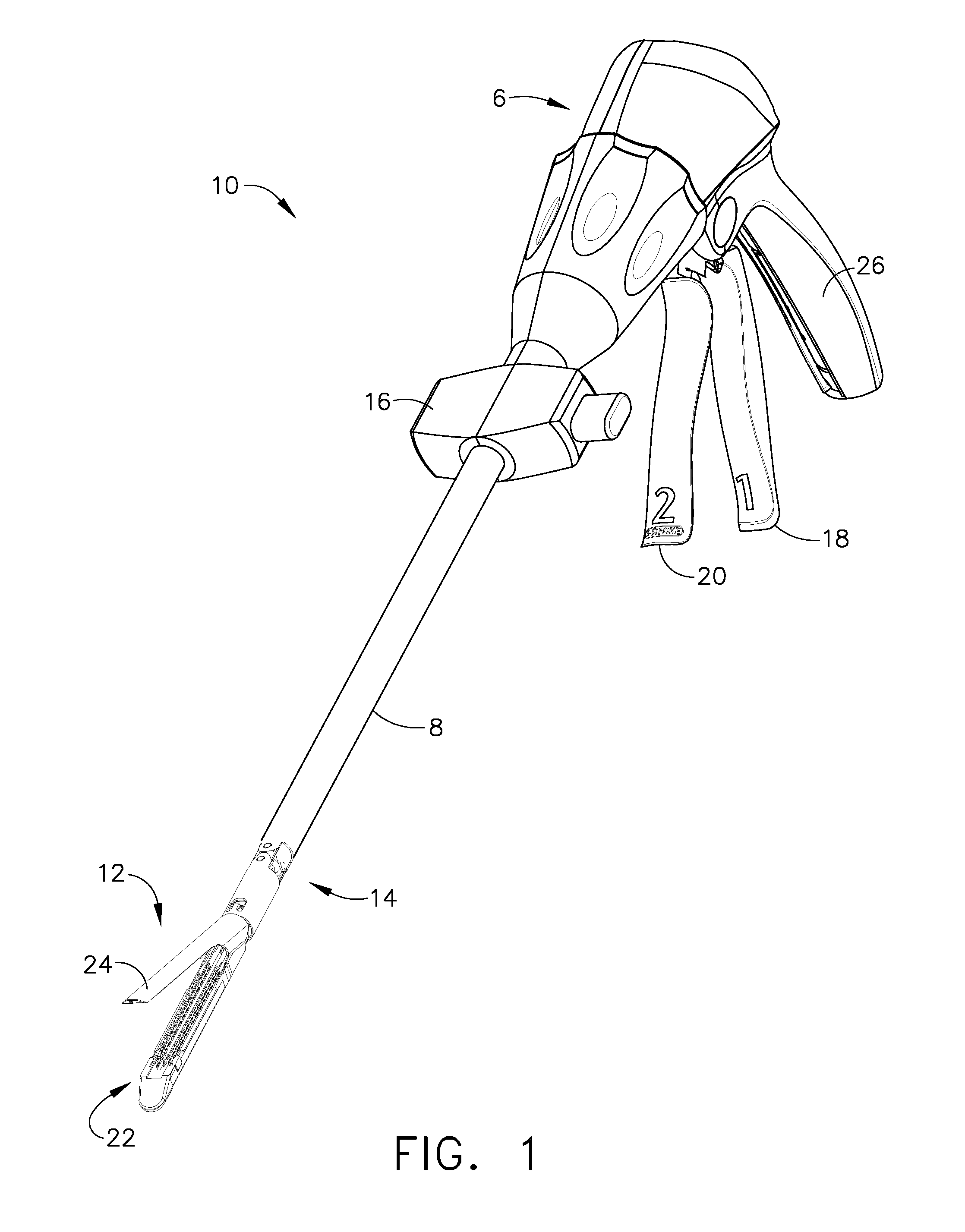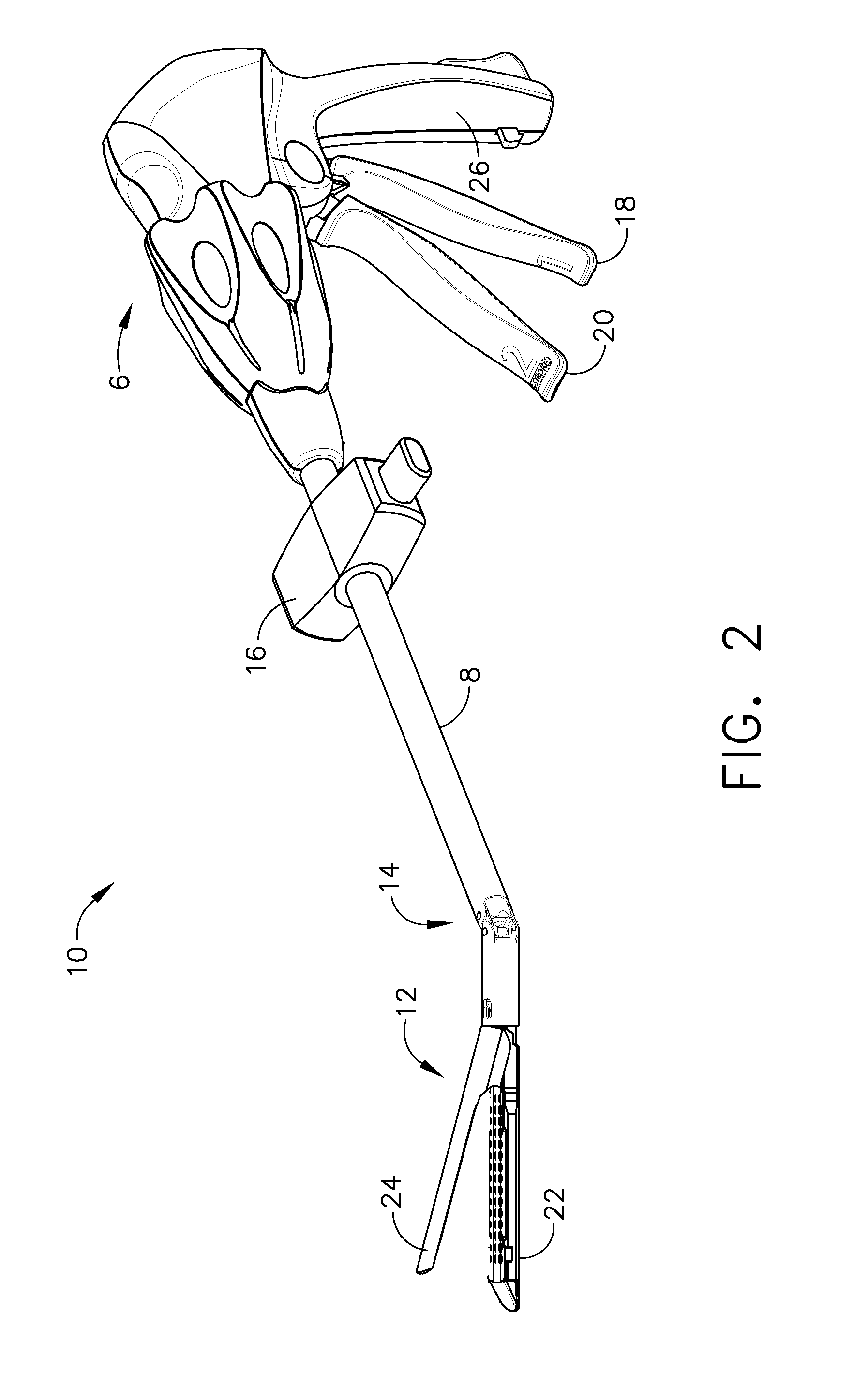Robotically-controlled end effector
a robot control and end effector technology, applied in the field of surgical instruments, can solve the problems of pinched jaws, ineffective closure of staples in severed tissue, and tissue severing and stapling,
- Summary
- Abstract
- Description
- Claims
- Application Information
AI Technical Summary
Benefits of technology
Problems solved by technology
Method used
Image
Examples
first embodiment
[0279]FIGS. 47A, 48 and 49 show embodiments of a knife position sensor 2008. The knife position sensor 2008 senses the position of the knife 32 or cutting surface 1027 within the staple channel 22. In a first embodiment, referring to FIGS. 48 and 49, the sensor 2008 includes a magnet 2009 that is coupled to or otherwise supported by a portion of the firing bar 1022 of the instrument 10. A coil 2011 is supported within a longitudinal recess 1014 in the firing trough member 1012 (see FIG. 41) and is so positioned to permit the firing bar to reciprocate therein. As the knife 32 and cutting surface 1027 are reciprocated through the staple channel 22, the firing bar 1022 and magnet 2009 may move back and forth through the coil 2011. This motion relative to the coil 2011 induces a voltage in the coil 2011 that is indicative of the position of the firing bar 1022 within the coil 2011 and which is also indicative of the position of the cutting edge 1027 within the staple channel 22. This vo...
embodiment 3201
[0369]FIGS. 98-100 depict another surgical tool embodiment 3201 that is substantially identical to surgical tool 3200″ described above, except for the differences discussed below. In this embodiment, the threaded closure rod 3342′ has variable pitched grooves. More specifically, as can be seen in FIG. 99, the closure rod 3342′ has a distal groove section 3380 and a proximal groove section 3382. The distal and proximal groove sections 3380, 3382 are configured for engagement with a lug 3390 supported within the hollow threaded end portion 3341′. As can be seen in FIG. 99, the distal groove section 3380 has a finer pitch than the groove section 3382. Thus, such variable pitch arrangement permits the elongated channel 3222 to be drawn into the shaft 3208 at a first speed or rate by virtue of the engagement between the lug 3390 and the proximal groove segment 3382. When the lug 3390 engages the distal groove segment, the channel 3222 will be drawn into the shaft 3208 at a second speed o...
PUM
| Property | Measurement | Unit |
|---|---|---|
| rotation | aaaaa | aaaaa |
| forces | aaaaa | aaaaa |
| voltage | aaaaa | aaaaa |
Abstract
Description
Claims
Application Information
 Login to View More
Login to View More - R&D
- Intellectual Property
- Life Sciences
- Materials
- Tech Scout
- Unparalleled Data Quality
- Higher Quality Content
- 60% Fewer Hallucinations
Browse by: Latest US Patents, China's latest patents, Technical Efficacy Thesaurus, Application Domain, Technology Topic, Popular Technical Reports.
© 2025 PatSnap. All rights reserved.Legal|Privacy policy|Modern Slavery Act Transparency Statement|Sitemap|About US| Contact US: help@patsnap.com



